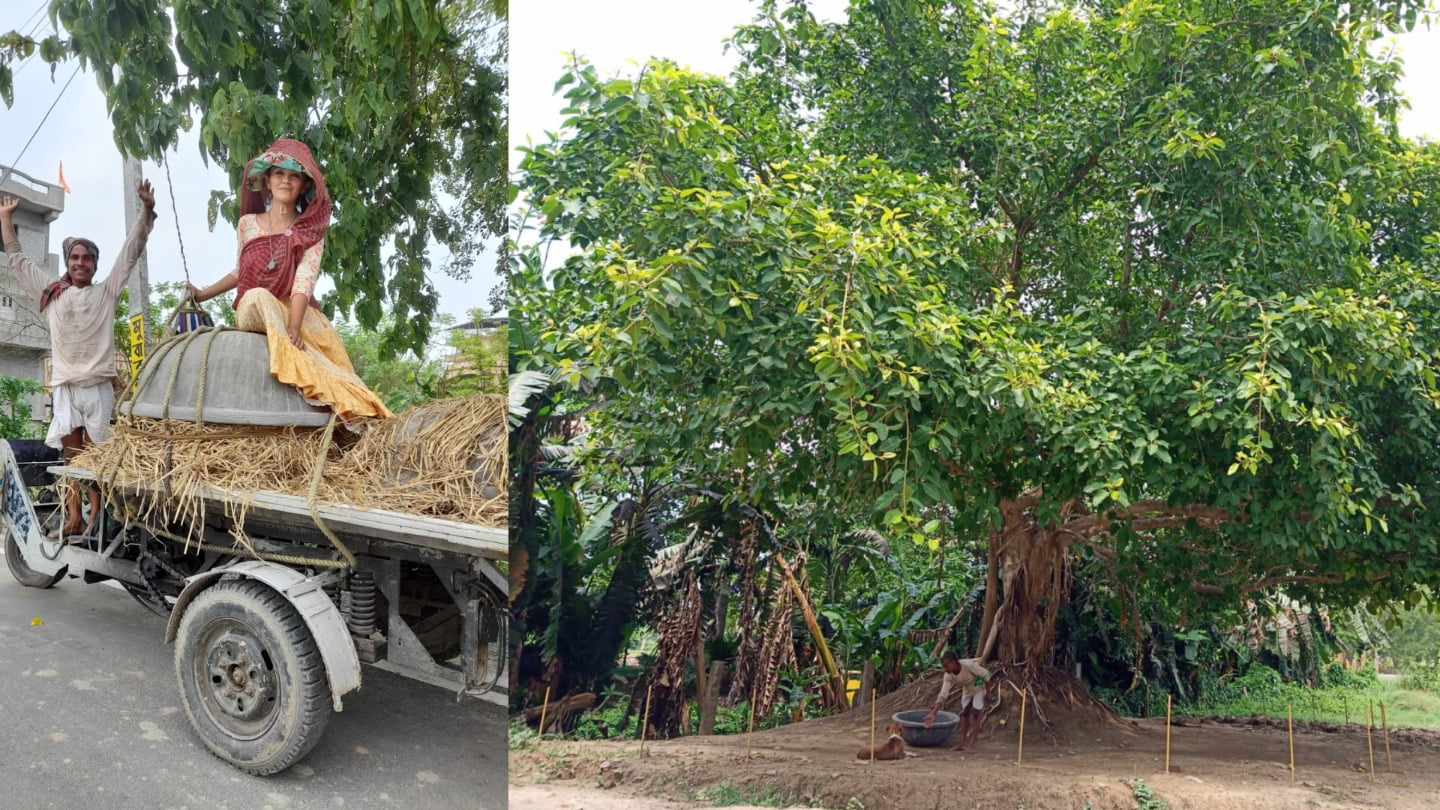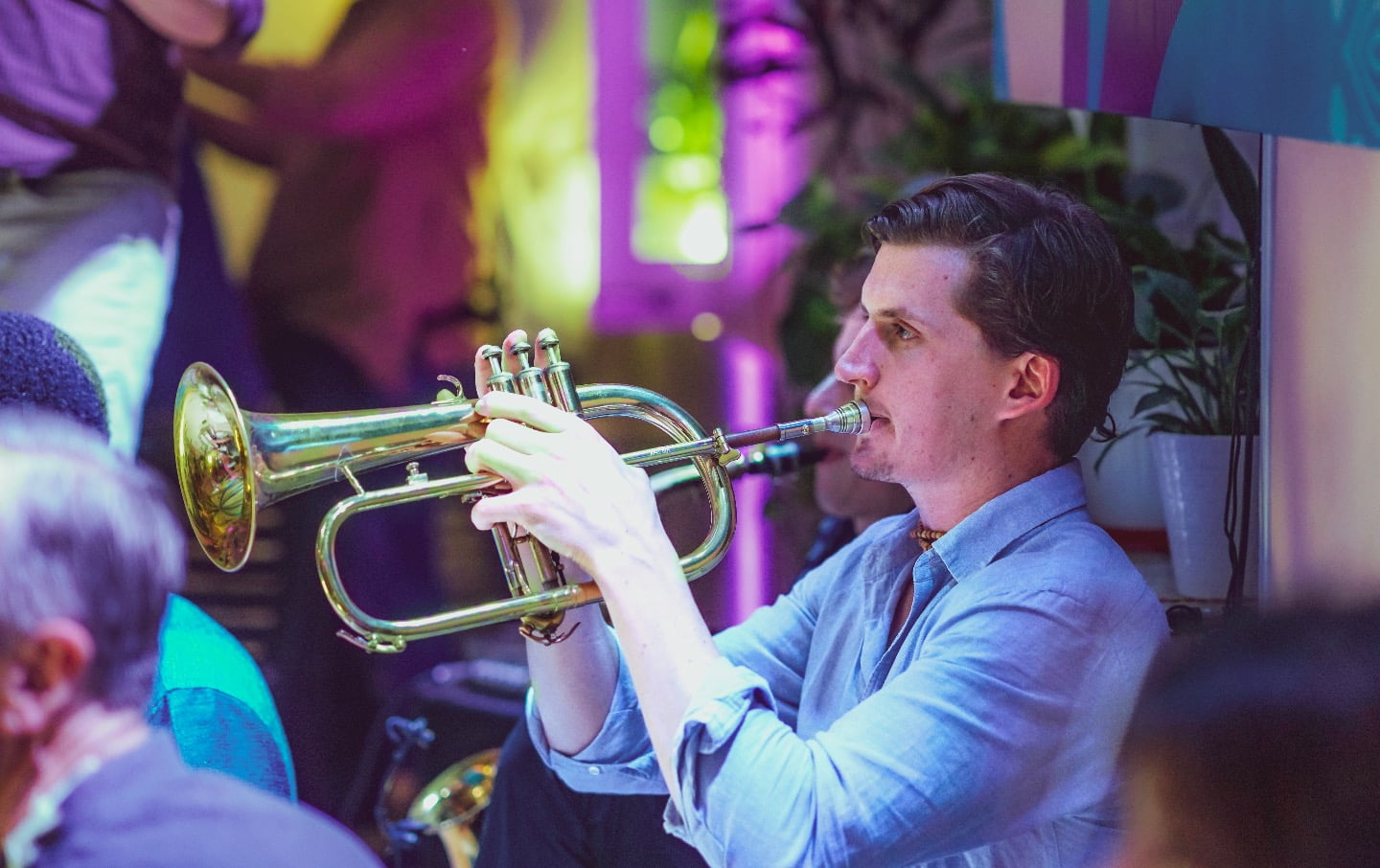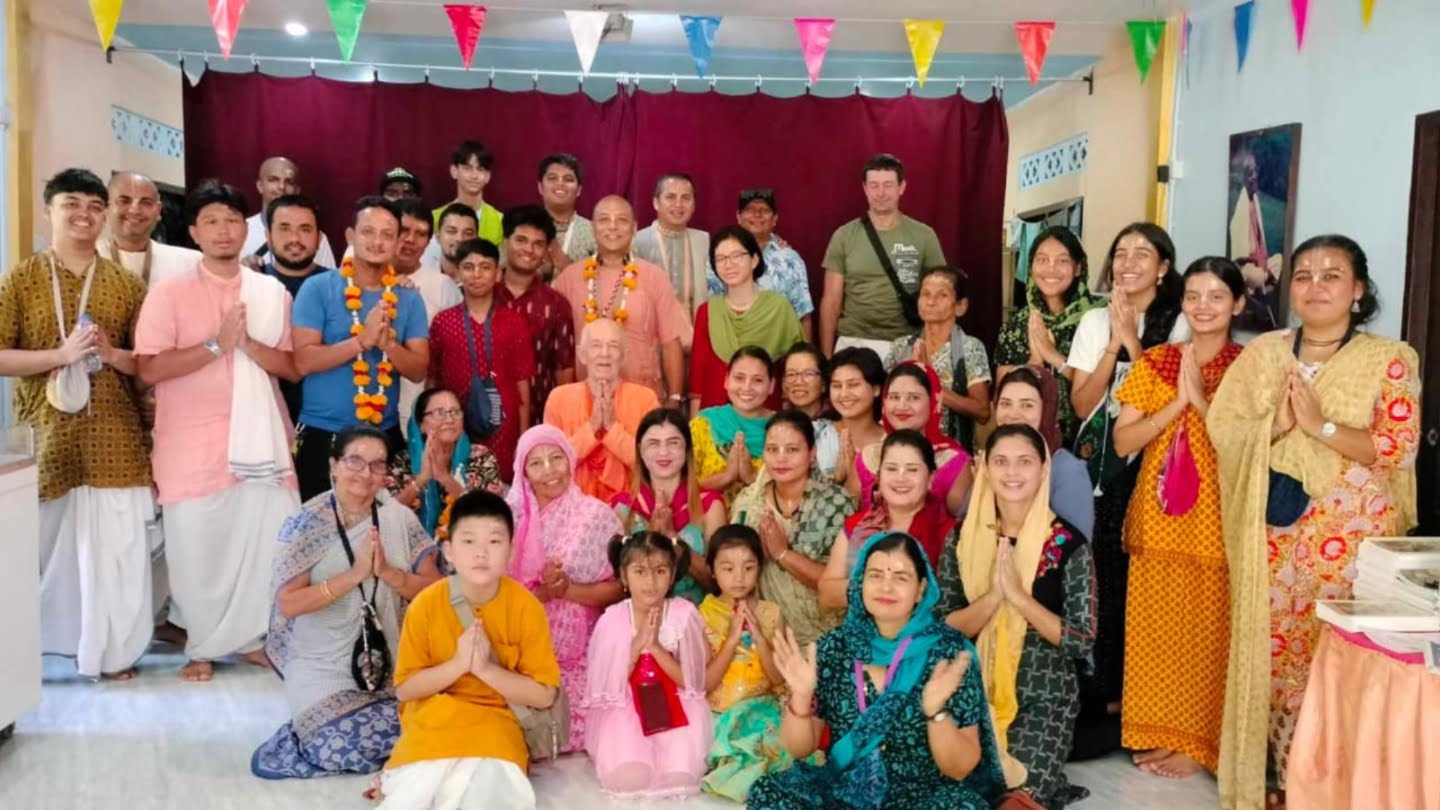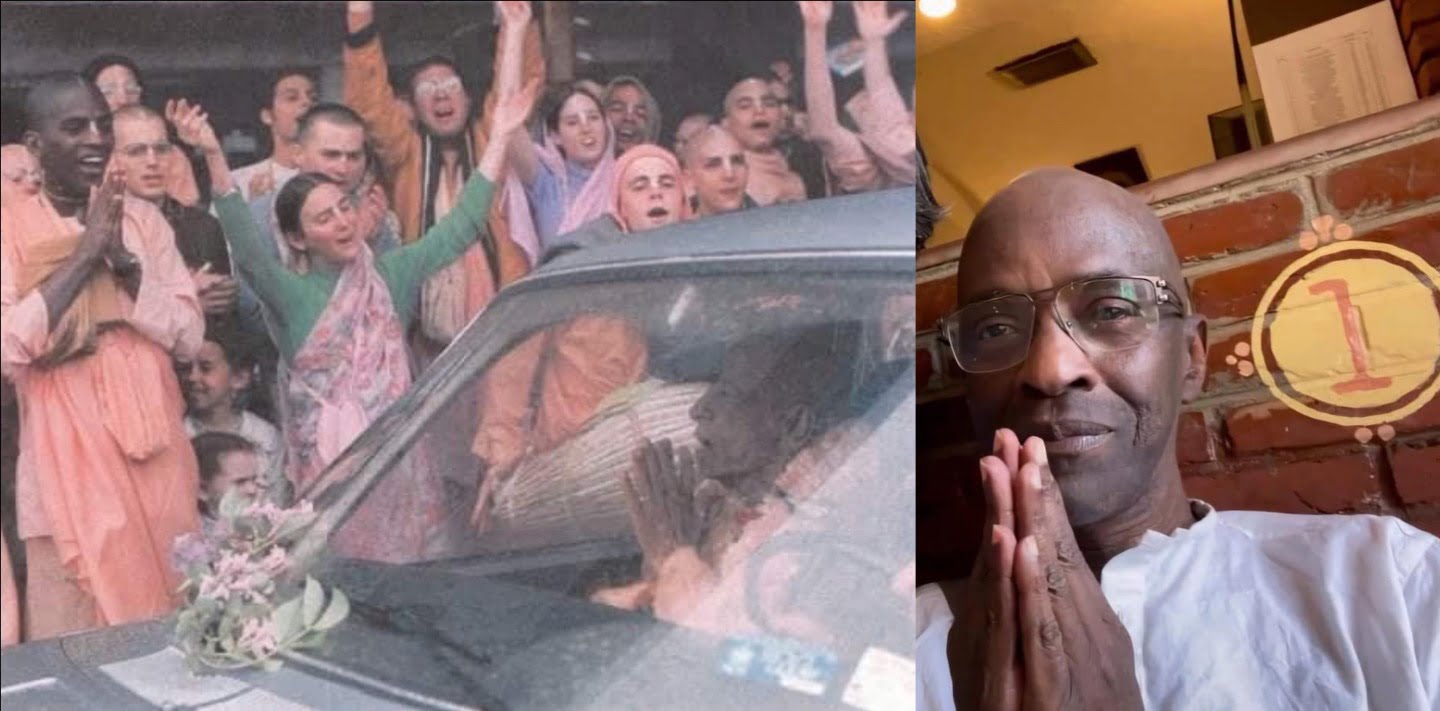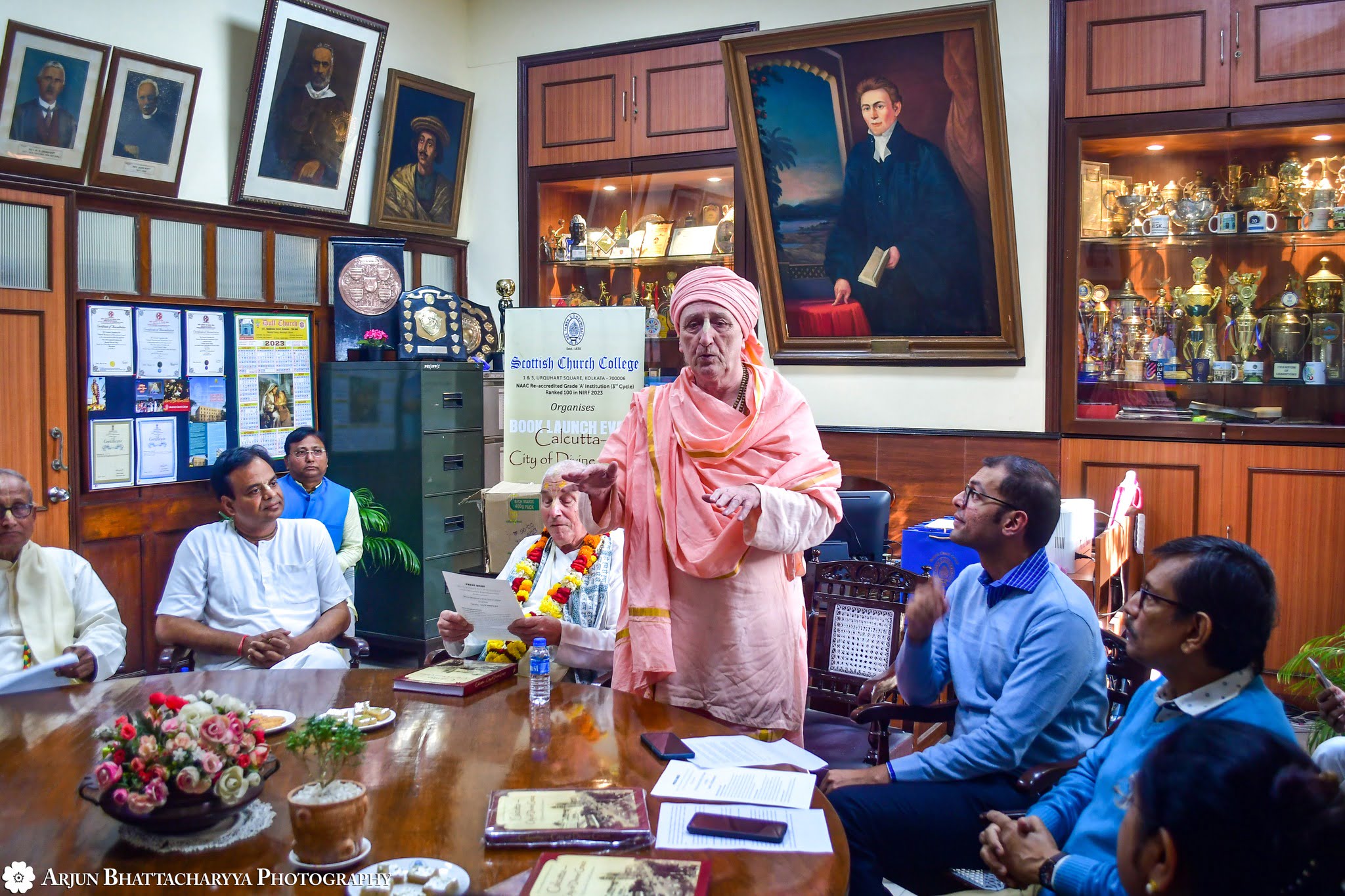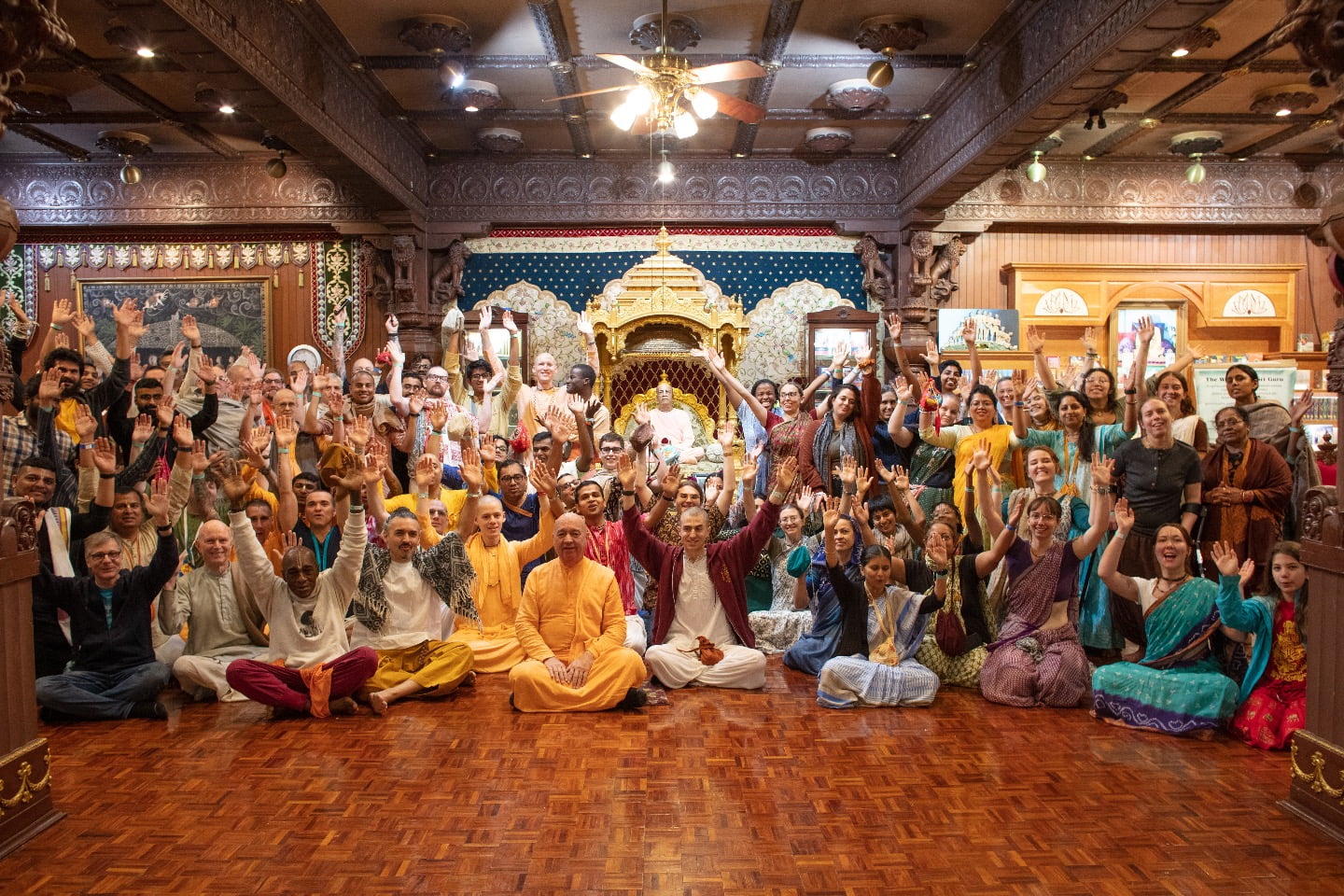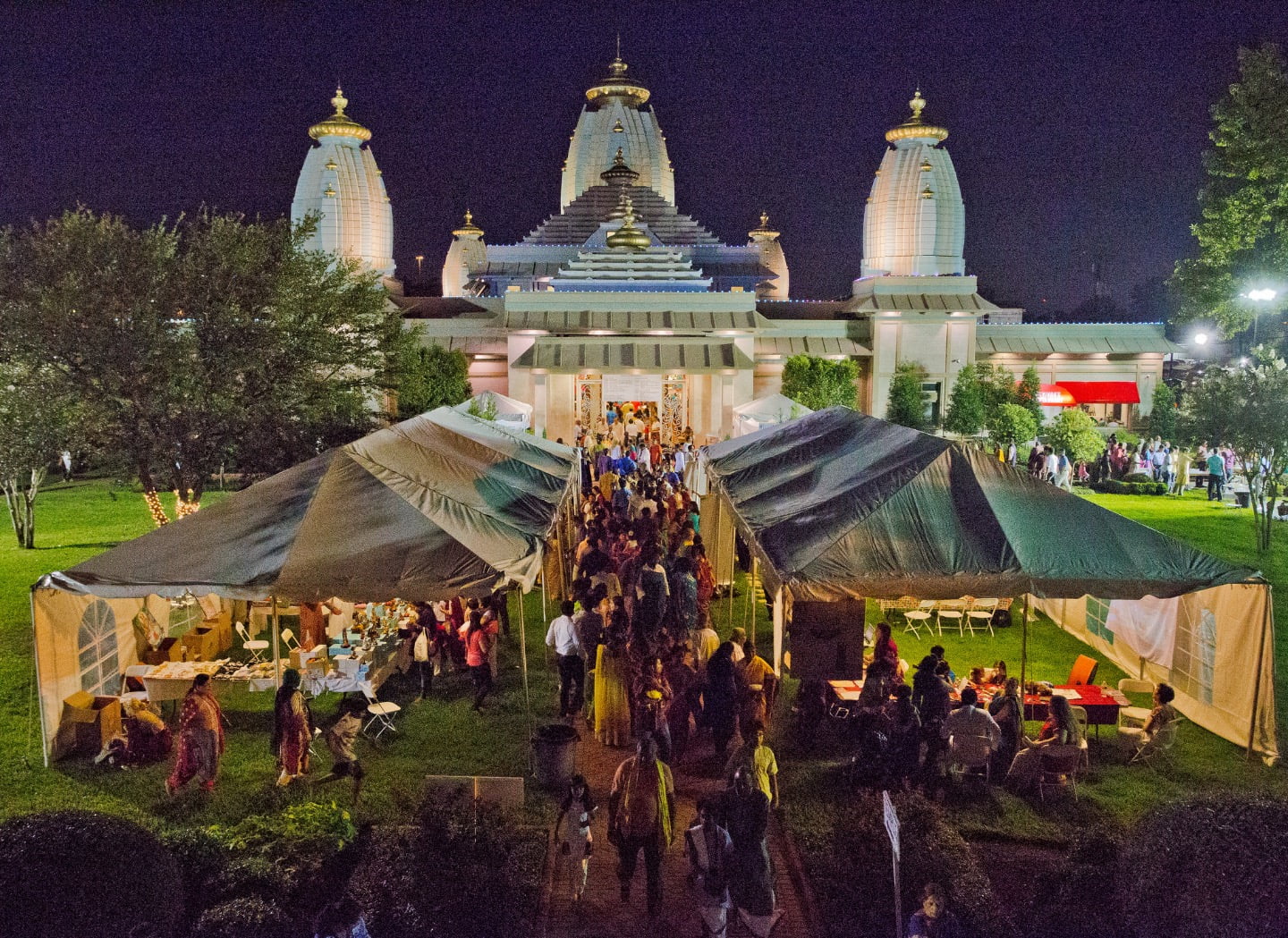New Vrindaban Rebuilds, Sees Bright Future Ahead
By Madhava Smullen | May 10, 2013
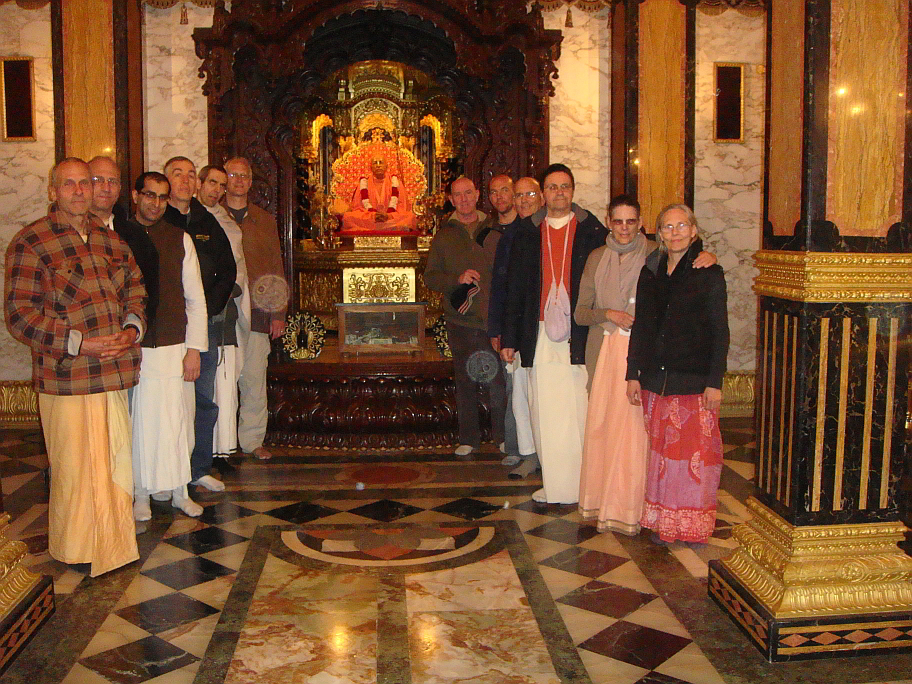
Established in 1968 in West Virginia, New Vrindaban was ISKCON’s first rural community.
Over the following years, the pioneer community made a series of well-documented mistakes in its early attempts, going through some of ISKCON’s darkest and most difficult times. Resources were affected, but most of all people—many of whom left the community.
Still, a skeleton crew remained through the toughest times, working through the repercussions and doing their best to correct the errors of the past.
In more recent times, there has been renewed energy to rebuild New Vrindaban and to turn it into the exemplary self-sufficient, Krishna conscious community that Srila Prabhupada envisioned.
New key personnel have been brought in to help with the transition, including community president Jaya Krishna Das. Formerly the administrative director for Bhaktivedanta College, Belgium, Jaya Krishna took up his new post in spring 2011 and has been working hard since to help New Vrindaban grow into a thriving, attractive community.
During an annual board meeting on the weekend of April 20th and 21st, New Vrindaban devotees discussed some exciting developments in the first phase of the community’s transition.
ISKCON Governing Body Commisioners Anuttama Das, Malati Dasi and Tamohara Das joined board members from two non-profit organizations at the meeting—ISKCON New Vrindaban and ECOV, which focuses on the community’s self sufficiency efforts.
“Everyone came in looking for ways to answer the question: how can we better serve the devotees of New Vrindaban, and improve the overall community spirit?” says Chaitanya Mangala Das, a second generation devotee and member of both boards.

Board Members tour the dilapidated buildings at Bahulaban, which will be torn down and recycled
Answers fell into two categories. The first was improving the physical environment, an effort that’s already in progress in a big way.
Early this year, for example, the residential quarters for devotees in the Radha Vrindabanchandra temple building were completely renovated.
“The wood paneling that had been on the walls since the early 1980s was removed, and the rooms were sheet-rocked,” says Chaitanya Mangala. “They also put in new windows, and fully furnished each room with basic living amenities such as a bed, chair, and desk. The floor mats and sleeping bags of the past are done away with, and it’s been made a more comfortable environment for residents.”
Standard capacity for the residential quarters is fifty-four devotees, but they can accommodate ninety-six at full capacity during festivals.
Meanwhile rooms at the community’s guest lodge are also being completely remodeled in time for the Festival of Inspiration on May 10th, 11th and 12th this year. The old bunk-bed style lodgings of yesteryear are gone, to be replaced with queen beds and motel quality accommodations. Altogether the rooms will have a total capacity of 130 persons.
The New Vrindaban Welcome Center is also receiving a full do-over to create a warm, inviting atmosphere for guets.
In addition the community’s snack bar is being transformed into an elegant Govinda’s Vegetarian Restaurant with sit-down menu service as well as a full buffet. After a partial opening for the Festival of Inspiration, it will be fully functioning by the end of May.
Restoration work is also beginning on Srila Prabhupada’s Palace of Gold, which has been a sacred place of pilgrimage and major tourist attraction for New Vrindaban over many years but had fallen into disrepair.
The full cost of all needed renovations falls somewhere between three and five million dollars. While the community does not have these funds and is discussing ways to raise them, devotees are already getting started on renovations with the funds they do have.

(Top) The old wood panelled walls in the guest lodge, and (bottom) the remodeled room
Work has already begun on the stairs leading up to the Palace, and will commence on the entrance walk-way in the summer.
“Then as more funds are raised, additional repairs will be ongoing for as long as it takes,” says Chaitanya Mangala.
New Vrindaban is also planning to tear down old and unsightly buildings. During the meeting, board members took a walking tour of Bahulaban, where devotees resided in the early years before moving to the current location in the mid 1980s.
Bahulaban was essentially closed down after the move, and the three main buildings there have not received any maintenance for two decades. One building is salvageable, but the other two, a barn and an old guesthouse that was damaged by fire in the 1990s, are not. Both are eyesores and visual reminders of darker and sadder days at New Vrindaban, and will be torn down.
Materials from them such as oak beams and concrete, however, will be recycled into other projects. This is evocative of the “green” way in which New Vrindaban is approaching its renovations.
For instance, the guest lodge has been remodeled using low volatile organic compound paint, energy saving CFL bulbs and non-toxic floor underlayment. And water-filling stations are being installed throughout the property, with reusable metal water bottles being made available to guests. Eventually, the community hopes to completely eliminate the use of plastic water bottles.
There are other self-sufficient initiatives, too. A team of devotees will soon be producing cream, yogurt, butter, ghee and other milk products for the Deities’ daily offerings using only milk from New Vrindaban cows.

The welcome center before (above) and after (below) renovations
And the garden crew are busy. They’re planting seedlings for the Deity Flower Garden with a goal of providing all of the temple’s flower needs throughout the 2013 summer growing season.
They’re also planting 100 fruit trees, 50 nut trees, 110 berries, 20 grape vines and a variety of perennial vegetables. And they’re installing three green houses to expand agricultural production by starting the growing season earlier in the spring and extending it later into autumn.
Meanwhile New Vrindaban’s unique festivals are exploding with popularity. There’s the Festival of Inspiration, now in its thirteenth year; the 24 Hour Kirtan, held every June; and the brand new Festival of Colors, which drew over 1,000 youthful and energetic college students for its inaugural event last September.
“The long range goal is to eventually fill up every weekend from May through September with a different festival that attracts different types of crowds,” says Chaitanya Mangala.
But with all these projects, the New Vrindaban board members are not forgetting that people are the most important part of a community.
“In our meeting we discussed how to improve community spirit, so that the devotees are feeling strong in their relationships with each other and inspired, enthusiastic and supportive of one another,” Chaitanya Mangala says.
Ideas included taking lessons for success from other devotee communities, developing devotee care, training leaders to become better servant leaders, and strengthening the relationships amongst devotees.
The latter includes developing an underlying assumption of goodwill amongst the community members.
“Disagreements are going to come up no matter what,” says Chaitanya Mangala. “Prabhupada would say, ‘People who believe in Utopia are impersonalists.’ There is no such thing as a perfect scenario in this world. There are always going to be challenges and disagreements. But the mindset in which you approach them can make all the difference in the world.”
At the end of the meetings, board members also invited community residents for an afternoon in which they presented what they had discussed, then opened up the floor for questions and concerns.
Overall, they’re feeling very positive that New Vrindaban can progress on from its past into a very bright future.
“We’re blessed to be able to participate in manifesting Srila Prabhupada’s grand vision of New Vrindaban,” Chaitanya Mangala says. “Along the way, we all fall short and fail at times to live up to all of the ideals. But as long as we continue to participate and perservere, through that process we become stronger, and eventually we do succeed.”





